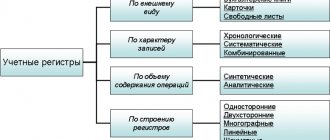What's special about private farms?
The definition and features of private household plots are enshrined in the federal legislative act “On personal subsidiary farming” of July 7, 2003. What is LPH? This is the name given to a special type of economic activity when a citizen is engaged in agriculture on his own or leased territory, but not for business purposes, but for personal needs.
But what does this give? What the owner of the plot grows, he does not sell, but uses it himself, for the needs of his family. This is a kind of way to replenish the family budget, but not at the expense of finances, but in kind.
Another important question that you should ask before registering a private plot is what taxes await the owner of the plot . Due to the fact that this is not a business activity, there is no need to pay income tax in cash or in kind. The only tax that the state requires from owners of private household plots is land tax, in the amount of 0.3 percent of the cadastral value of the plot per year, that is, very little.
But in the event that the owner of the farm decides to sell surplus production, income tax must be paid on the income from the sale. However, this is a theory. In practice, there are usually either no surpluses at all, or their quantity is insignificant and the owner sells them inexpensively to his friends.
This concept should not be confused with “peasant farming ,” which is a type of entrepreneurship and is therefore subject to other taxes, including on profits. Owners of private household plots also do not have the right to hire employees; all work on the site is carried out only on their own.
Personal subsidiary farming is a way to replenish the family budget not at the expense of finances, but in kind.
Purchase of livestock
Before purchasing, you should decide on the purpose of breeding and the type of bird. The most common are chickens, geese, and ducks. They are divided into meat, meat-egg and egg breeds.
Among egg breeds, the most popular are Russian white chickens, among meat breeds - broiler, white Plymouth Rock, Dorking, among meat and egg breeds - Poltava, Sussex, Rhode Island.
The most common breed of duck is the Peking duck, as it gains weight faster than others. Black whitebreasted, gray and clayey breeds are also bred.
Geese are divided into light (Kuban, Chinese, Gorky), medium (Shadrinsk, Rivne, Tula, Arzamas, Italian) and heavy breeds (Toulouse, large gray, Kholmogory, Emzem).
For a profitable business, you should purchase about 800 heads of poultry. The cost of young animals will depend on their age and type:
- broilers - 65-220 rubles, laying hens - 180-200 rubles;
- geese - 100-370 rubles;
- ducks – 70-140 rub.
Does the state limit the area of household plots?
The area of the personal plot should not exceed half a hectare (it is believed that this is sufficient for the needs of one family). But regional authorities have the right to increase the permissible size of plots by a special legislative decision by a maximum of 5 times (that is, up to 2.5 hectares). Therefore, when planning to create private household plots, study regional laws in this area .
What categories of the population can receive territories for personal gardening?
When you are thinking about how to open a private household plot from scratch, the most important question is where to get the land. When a person owns land, registration of a private plot is not required - in fact, he can begin agricultural work at any time.
But if you don’t own a plot of land, but you need to run a private plot? There is a way out, and it’s quite simple and without financial investments at the first stage. In this case, you need to write an application to the local municipal authority (administration of the city, district, rural settlement) about the desire to run private household plots and a request to allocate a plot of land for this.
Surprisingly, the answer is likely to be yes. This is explained by the conclusion that in most regions of Russia there is enough free land that is quite suitable for rural work . It is much more profitable for the authorities to transfer this land to the owner of the private household plot and receive a tax from it (land tax, by the way, is local, that is, goes directly to the municipal budget) than to have no profit from it at all for many years.
Sometimes authorities even conduct special programs to inform citizens about the possibility of allocating land for private household plots and provide the opportunity to receive a subsidy for certain types of activities.
In this regard, it is even much easier for rural residents, because they are required to have plots of land, both within the boundaries of the settlement (near their place of residence) and beyond. City residents receive household plots for agriculture only if there are vacancies.
Land plots are mandatory for rural residents
Cost of equipment
To organize a poultry farm you will need certain equipment:
- feeders (80-500 rubles);
- drinking bowls (200 rubles);
- incubators (automatic – 6,000-7,000 rubles, regular – 1,500-4,500 rubles)
- thermostat (500 rubles);
- fans (500 rubles/piece);
- plucking machines for geese, chickens, ducks (from 7,000 rubles);
- tapes for collecting eggs (100 rubles/m);
- tapes for removing litter (250 rubles/sq. meter);
- tables for cutting poultry (10,000-30,000 rubles);
- freezers (from 100,000 rubles).
Feed costs:
- feed mixture – 4,000-5,000 rubles/ton;
- wheat 4,500-10,000 rubles;
- rye - 4,000-6,000 rubles;
- barley – 7,000-10,000 rubles;
- corn - 6,000-9,000 rubles;
- millet – 5,000 rubles.
Is registration of a land plot enough for comfortable farming?
There are 3 options for providing land for private household plots:
- permanent use for a fee for an unlimited period (the most unprofitable option);
- rent, up to 20 years;
- free use, up to 6 years.
On the one hand, after the land has been allocated, work can begin. But on the other hand, in such a situation the citizen has no confidence that the plot will not be taken away from him after some time. Therefore, a reasonable step would be to register ownership of the site . Obviously, this is not an easy path, but at the same time, it is not as difficult as it seems at first glance.
Fertility and weight gain
Egg breeds of chickens produce 220-300 eggs in the first year, then 15% less. The weight of an adult chicken is 1.8-2 kg. Chicken eggs are in stable demand, and there are usually no problems with their sale.
Ducks produce 160-190 food eggs per year. In 50 days, the weight of the bird reaches 2-2.2 kg. By autumn, an adult duck with a brood can produce 100-120 kg of meat.
In geese, unlike other bird species, egg production increases after the first year. They lay from 15 to 80 eggs per breeding season. The weight of one bird reaches 5-6 kg, while about 0.5 kg of fluff can be obtained from one carcass.
Is there a way to register the area of land as property?
How to register a plot as property? To do this, you will have to take several important actions and be prepared to have a lot of contact with government agencies. Let's look at the sequential steps of the owner of a private household plot to obtain a certificate of ownership of a land plot and evaluate how realistic it is to acquire your own land.
Certain groups of Russians have advantages when obtaining land plots for private household plots. This:
- young families who do not have their own housing (subject to an officially registered marriage);
- large families with 3 or more children;
- holders of the highest state titles.
Other citizens, before receiving land for personal farming, will have to go through a series of bureaucratic procedures and wait several years.
To register a plot as property, you need to be prepared to have a lot of contact with government agencies.
What steps do you need to take to register a plot?
So, step-by-step instructions for obtaining a certificate of land ownership :
- Issuance of a resolution on the allocation of a land plot for the needs of private household plots. This is done by local authorities. This is the first document, the possession of which the owner can begin agricultural work. The act will most likely indicate the period for which the land is provided, and also indicate the possibility of extending the rights of use. In each region, the procedure for providing land is different and may change from year to year. It is impossible to say unambiguously for what period the land will be provided. That’s why it’s so important to move on to the next steps and seek ownership rights. Otherwise, you may find yourself in a situation where trees and several crops grow on your site, and the local administration decides to sell the area for development.
- Registration of a cadastral passport and an order on established boundaries. This can be done in several ways. For example, contact the representative office of the Cadastral Board (in person) or the Rosreestr website (via the Internet). After filling out the application and paying the fee, after some time the owner will receive an extract from the register and a cadastral passport. You can also resort to the services of law firms specializing in land issues and order the registration of a cadastral passport named after. This will cost significantly more, but it guarantees a faster result and eliminates the need to communicate with the authorities.
- Submitting an application for state registration of homestead territory and obtaining a certificate of land ownership. The institution issuing these certificates is Rosreestr. The package of papers will need to be accompanied by acts confirming the conclusion of ownership rights to the plots.
Nuances of registering personal subsidiary plots
A very important requirement for recipients of land for the needs of private household plots and subsequent registration of its ownership is the intended use. That is, on land allocated for private household plots, you can only engage in agriculture to meet the needs of the family. You cannot obtain land for private household plots and then build a shopping center there.
Regulatory authorities usually check the intended use of the site, but otherwise do not bother the owners. The law prohibits any interference in the activities of such farms, and therefore you are absolutely free to choose methods and directions of management. You can engage in farming, poultry and livestock farming, gardening and even beekeeping.
Another important advantage of private household plots is the availability of government support . If possible, regional and local authorities ensure the development of infrastructure in the territories, subsidize certain types of work, organize special educational events and preventive veterinary examinations.
An important advantage of private household plots is the availability of government support
Sales of products
Selling manufactured products is sometimes more difficult than producing them. You definitely need to find trading and processing organizations with which you will cooperate. It should be remembered that pricing in the agricultural market depends on the volume of imported goods. Market oversaturation often leads to farmers being forced to sell goods below cost. And it doesn’t matter so much whether your business is in poultry or fruits and vegetables. This rule applies to all types of products.
Does the law prohibit the construction of buildings on the territories of subsidiary plots?
The federal law on personal subsidiary plots stipulates the right of plot owners to use personal plots not only for agriculture, but also for the construction of a residential building (and commercial buildings).
You can build a house without changing the category of the plot , therefore there is no need to coordinate with the authorities the transfer of land from the category of private household plots to individual housing construction (individual housing construction). When building a house, you must comply with all building codes and safety requirements.
An important condition for construction is the following. The construction of a house will be legal only if the site is located inside a populated area. If the land is allocated outside the settlement, for example, in a field, a house cannot be built.
How to register a house on a private plot? Before you start building a house, you need to obtain the appropriate permit. It is most convenient to submit an application for construction permission at the multifunctional center. It must be accompanied by documents confirming property rights, a site layout plan, and a schematic plan for the location of the future building. Work can begin after receiving a positive decision from the municipal authorities.
After completion of construction work, you will have to write an application again for permission to put the house into operation. A professional commission will inspect the site, the new building and, provided that all standards are met, issue a permit.
The final step will be registering ownership of the new home. This is done by Rosreestr, but you can also submit documents through the multifunctional center. To do this you need:
- statement;
- permission to put the house into operation;
- confirmation of property rights to the site;
- technical documentation and receipt of payment of the duty.
In addition to a residential building, it is completely legal to build bathhouse complexes, greenhouses and hotbeds, wells, cellars and warehouses and any other premises for domestic and economic needs on the site.
Investments and profits
Taking into account the rental of premises with a small area, equipment and the purchase of feed for 800 animals, the initial costs will be about 500,000 rubles. Monthly costs (feed, salaries) are about 80,000. The business will pay for itself in 6 months.
Prices for poultry meat: chicken – 60-90 rubles/kg, duck – 150 rubles/kg, goose – 200-300 rubles/kg. Chicken eggs sell for about 25 rubles/dozen.
The price of goose down is about 1,200 rubles/kg. Income from meat poultry will come in 6 months, since it takes time to reproduce and raise it.










